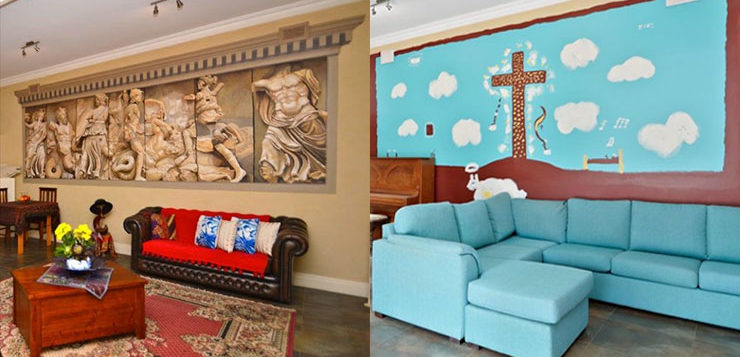DON’T MISS ANYTHING! ONE CLICK TO GET NEW MATILDA DELIVERED DIRECT TO YOUR INBOX, FREE!
In an outback town famous for its super cheap housing and exceptionally good art, a ‘home renovation’ has gone badly wrong. Or right, if you think destroying art is a good thing. Chris Graham reports from Broken Hill.
Beauty, they say, is in the eye of the beholder. But then they also say that there’s an exception to every rule. This story is about one such occasion.
It centres around a home renovation in the Far West town of Broken Hill, NSW’s most remote inland city, 12-hours drive from Sydney. Locals there have been left stunned and amazed – and by stunned and amazed I mostly mean ‘shocked, sad and outraged’ – by the renovation of a home that featured the artworks of a prominent local artist.
The house is at 233 Rowe Street, an iconic property built in the 1800s that has served as a bakery, an art gallery, even a restaurant which hosted famous international guess including Peter Fonda from Easy Riders. But its recent renovation has been dubbed Australia’s own ‘Ecce Homo’, a reference to a now infamous attempt at restoring an old painting in Spain which went spectacularly wrong (think Mr Bean and Whistler’s Mother).
By way of brief backstory, in 2012 Cecilia Giménez, an 80-something-year-old amateur artist and parishioner at a local church in the small Spanish village of Borja, decided to try her hand at restoring an ageing artwork painted directly onto the church wall.
The painting was called ‘Ecce Homo’, which means ‘Behold the man’, and is a phrase that has been used to describe many paintings depicting Jesus Christ wearing a crown of thorns. This particular ‘Ecce Homo’ was painted by artist Elías García Martínez in 1930, but the ravages of time saw the paint start to flake off. Enter Ms Giménez and her enthusiasm for art restoration.

Long story short, Ms Giménez’s effort quickly became an international laughing stock, but it also took on legend status in its own right – tourism to Borja has increased by more than 1,000 per cent since the story went viral half a decade ago, and Ms Giménez is now receiving royalties for merchandise sold to promote her work.
I’m not so sure tourism to Broken Hill – one of the staples of the local economy – is going to enjoy a similar boost as news travels of the renovation at Rowe Street. Although stranger things have happened.
The property was the long-term family home of well-known local artist Geoff De Main, a Broken Hill resident of almost 50 years. They bought the house – situated literally across the road from their first family home – in 1989, after discovering it was for sale in The Weekend Australian.
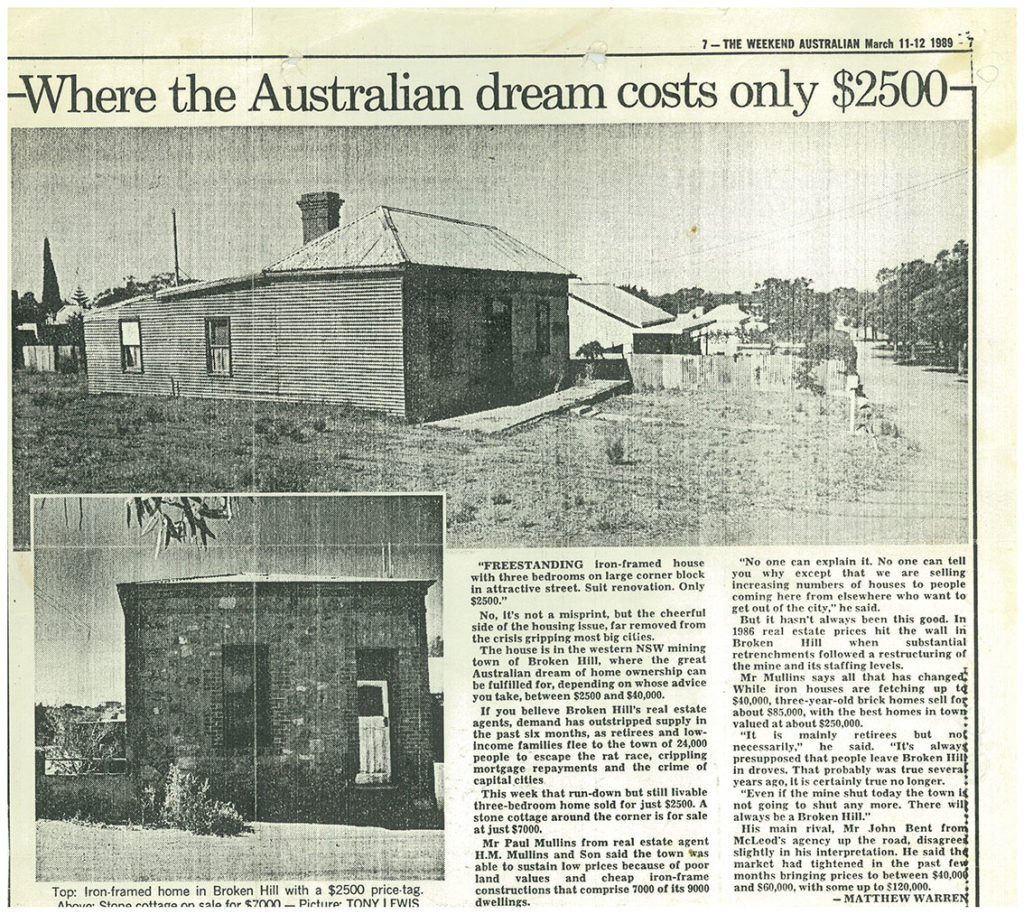
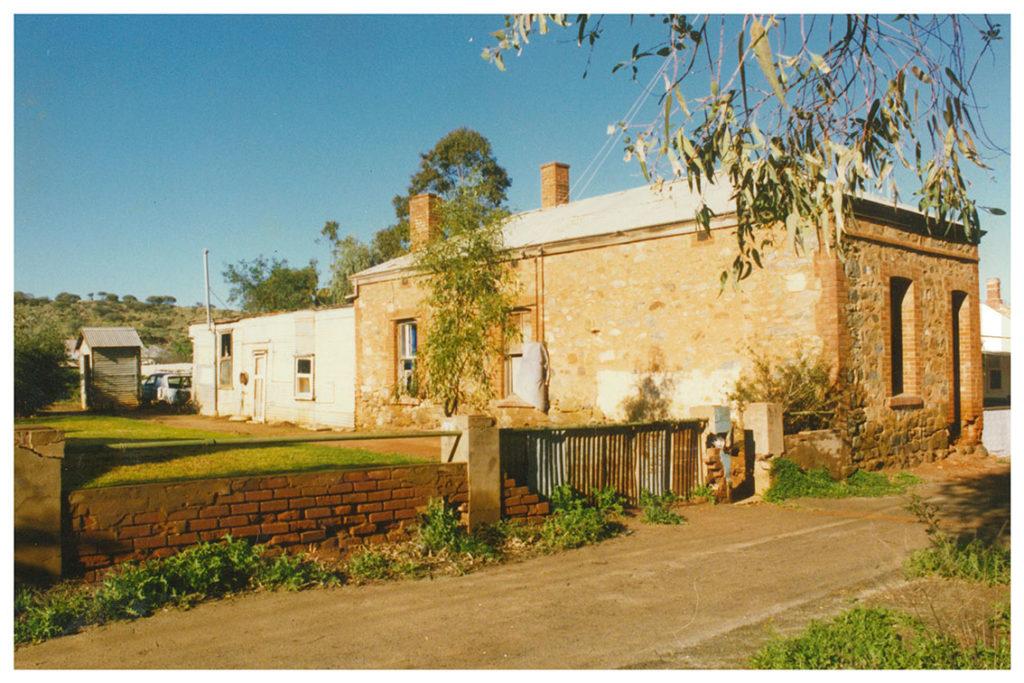
They set about painstakingly restoring it over three decades, transforming it into an art gallery, then a gallery/restaurant, then a bed and breakfast, and finally their family home.
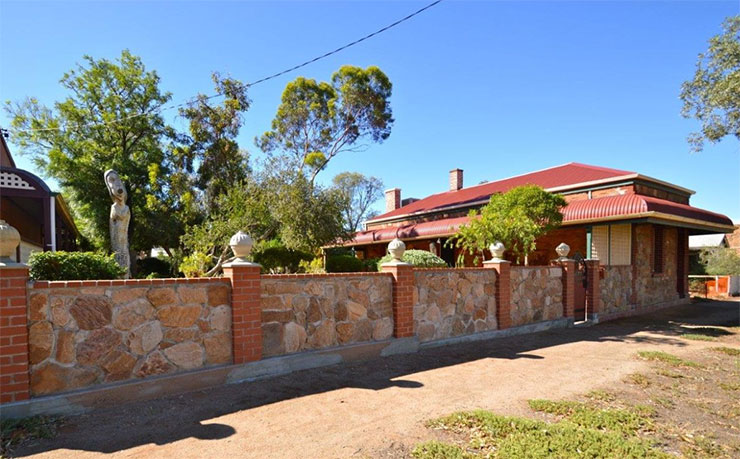
De Main has long been regarded as one of the town’s top artists, which is no small claim to fame when you consider ‘the Hill’ gave rise to people like Pro Hart and Jack Absalom. Indeed, a majority of the public artworks around town – and there are many (Broken Hill was the first city in Australia to be given national heritage status) – are by De Main, including the bronze ‘Syndicate Of Seven’ statues which line the path to the local civic centre. The Broken Hill Mining Company, later to become BHP, was founded by the seven men, who are considered the ‘founding fathers’ of Broken Hill.
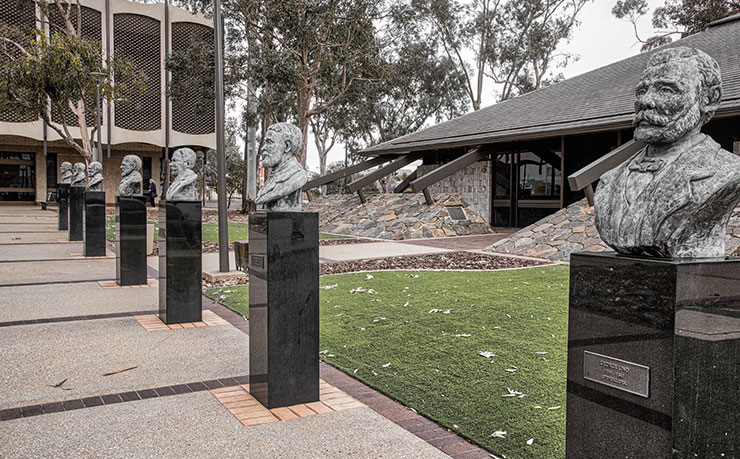
De Main is also known nationally as a working artist, and around the Far West region as a teacher, having taught fine art through the TAFE for 30 years at Ivanhoe, Wilcannia and Tibooburra. Long story short, in Broken Hill, as an artist, De Main has been a big deal for years.
In 2017, De Main and his wife Adelaide decided to sell up and move to Tasmania. The home in Rowe Street, which served as a gallery, restaurant, bed and breakfast and later their home, included murals, mosaics and a landscaped garden with dozens of De Main’s sculptures and artworks.
It was finally sold in March 2018 for $250,000, which was just over double the median average sale price for a ‘non-unit property’ in town at the time.
233 Rowe Street was purchased by a buyer ‘from away’, which is the Broken Hill term for a non-local. The new owner soon set about renovating.
Photos on the realestate.com.au site reveal the ‘before and after’, and that’s where things get, well, startling.
The extensive gardens were ripped up and are now just desert dirt patches. The sculptures – collectively worth tens of thousands of dollars based on the prices De Main routinely gets for his work – were dumped at a local art store and re-sold for a song.
Those sculptures included the seven original clay busts used to make the bronze ‘Syndicate of Seven’ statues, which the new owner appears to have simply chiselled off an outside brick wall. Their whereabouts is unknown.
But it’s a large mural in the main living area of the home – and more specifically what happened to it – that is causing the biggest stir amongst locals.
Painted by De Main in 2009, it measured about six metres wide by two metres high, and depicts a series of male and female statues. It’s based on the Pergamon Altar in Berlin. While it might not be everyone’s cup of tea in terms of living room décor, there’s no denying it was a striking piece of artwork. The animated pic below shows the before and after (just click on the picture).
I’m definitely no art critic, but if I were asked to describe it, I would suggest it’s what might happen if you gave Cory Bernardi a few buckets of paint, 20 kilos of Ketamine and a license to ‘get creative’.
That artwork is complimented by another on the front wall of the house which greets guests upon their arrival. It’s been painted over a large tile mosaic created by De Main which depicts a man and woman kissing.
Alas, the new owner of the home did not respond to offers for an interview with New Matilda, so we don’t know what this second painting is called either. I’ve named it ‘Cartoon Jesus Has A Spew’ to speed things up.
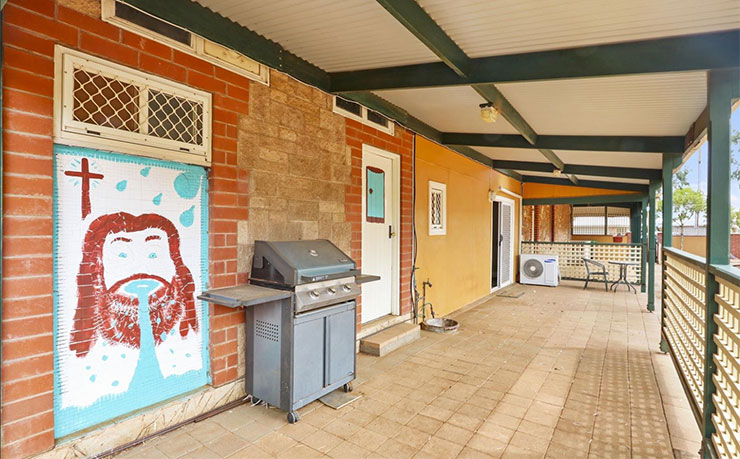
Geoff De Main, and his wife Adelaide did however agree to an interview. And it’s clear they’re pretty devastated by what was done to their former home.
“I don’t put myself at this level as an artist, but it’s like going to the Blue Mountains to the Norman Lindsay gallery and just destroying the whole lot,” said Geoff.
There’s two inspirations behind the mural, which took a month to paint. One is an artistic fascination with the ancient and modern ways people see bodies, the other is more personal.
“Adelaide and I had been over to Spain a couple of times. I was doing a series of works looking at the classical sculptures of the Romans and Greeks. I’m still sort of working on it actually, looking at classical artists and how they saw the human body, and now with people with tattoos, what we’re doing to our bodies – looking at the contemporary compared to the classical.
“And looking at that mural, it’s not the forms, but the forms which are broken – that’s what fascinated me.”
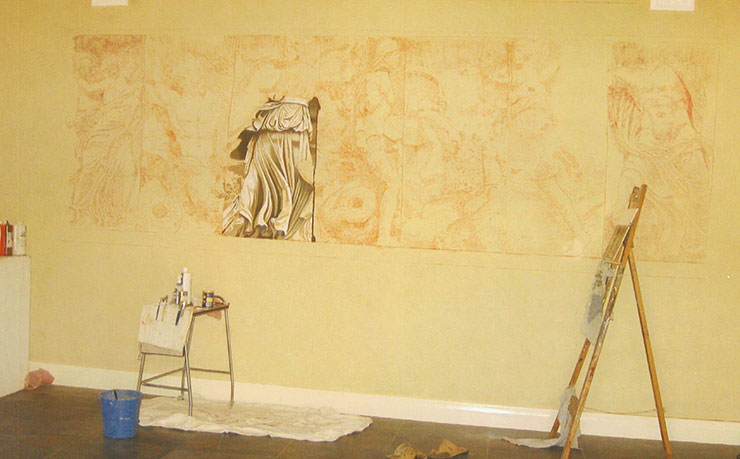
The other reason was more about a labour of love.
“I painted it for Adelaide for Valentine’s Day, that’s why she is so upset.”
Both are also deeply upset by what was done to the garden – the extensive plantings simply ripped out of the ground, and the sculptures, carvings and artworks trashed or dumped at a local second-hand store.
“The big shame is, I spent a lot of time in that garden, nearly 30 years. It’s just been ruined in one year,” said Geoff.
“We used to have birds coming, all the little creatures – he’s totally obliterated the whole eco system of that place.”
It is, of course, an owner’s right to do with a property whatever they choose, which the De Mains acknowledge. But they also think this occasion is a little more complicated.
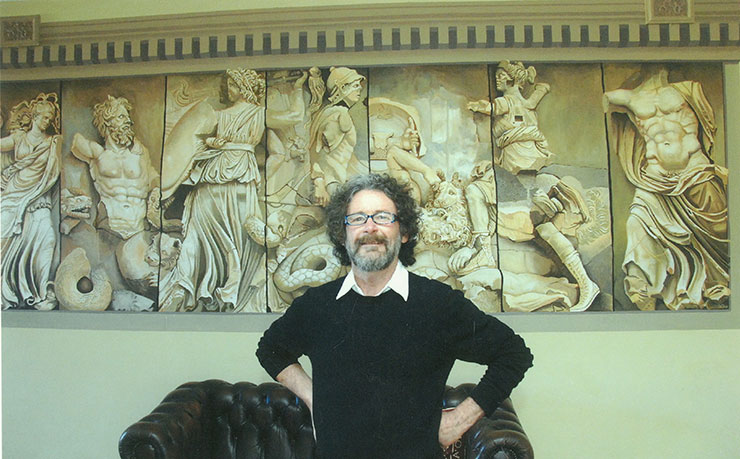
“My passion is public artwork. I think it’s so important. Sometimes private ownership becomes public ownership, and I think that’s the issue here. Sometimes, we’re just guardians,” says Geoff.
“Really, I just see this as vandalism, but it’s more a moral and ethical issue. He hasn’t done anything illegal.”
It’s also an owner’s right to ‘invest’ in their property however they see fit. Which begs a number of questions. Firstly, what is the value of the artwork and sculptures that has been stripped from the property?
As a rough guide, the asking price on the sculpture below listed on De Main’s website is $4,400, and it’s considerably smaller than many of the sculptures and works (there were couple of dozen) that were removed from the site.
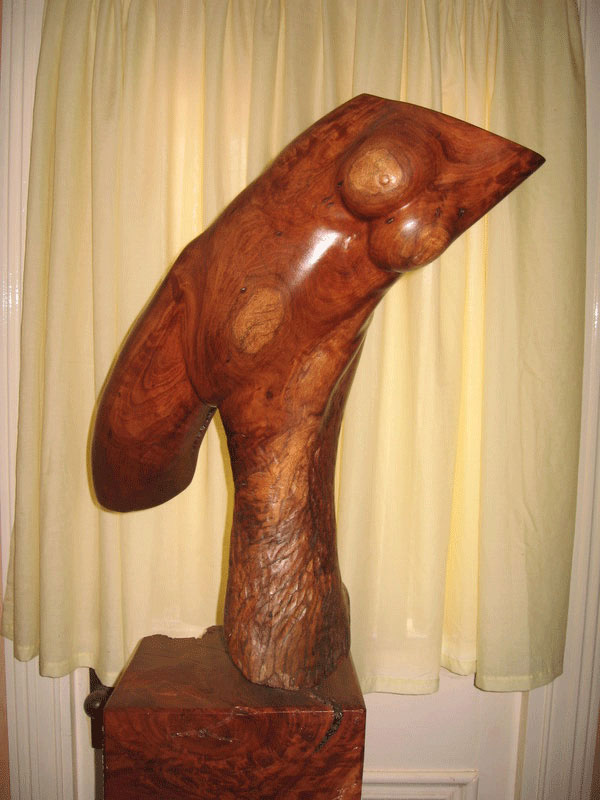
Secondly, and more to the point, what is the property now worth, having been denuded of a landscape garden and expensive artworks?
233 Rowe Street is back up for sale on Broken Hill’s First National Real Estate website. The asking price is $9,000 more than what it sold for a year ago.
On the upside – and potential buyers take note – Geoff says if and when the place sells he’ll approach the new owners and offer his services.
“I know enough about paint. I could if I went back there, bring it back. Maybe. It depends on the paint he used. But it would take a bit of work. But that’s up to the person who buys the house.
“I’m going to contact them, tell them about what was there. If they pay my fares back to Broken Hill, I’ll come and help restore some of what’s been vandalised.”
The last word belongs to Adelaide De Main, the inspiration behind the mural, who took to Facebook to thank the dozens of locals who expressed outrage, and support.
“Well Good Friday has come and gone and we’ve tried to forgive this wanton act of vandalism,” wrote Adelaide.
“I hope the good Lord can forgive him because we certainly cannot! Thanks everyone for your kind words x.”
If you’re interested, you can see more of Geoff De Main’s work – unmolested by home renovations – here.
DON’T MISS ANYTHING! ONE CLICK TO GET NEW MATILDA DELIVERED DIRECT TO YOUR INBOX, FREE!
Donate To New Matilda
New Matilda is a small, independent media outlet. We survive through reader contributions, and never losing a lawsuit. If you got something from this article, giving something back helps us to continue speaking truth to power. Every little bit counts.

